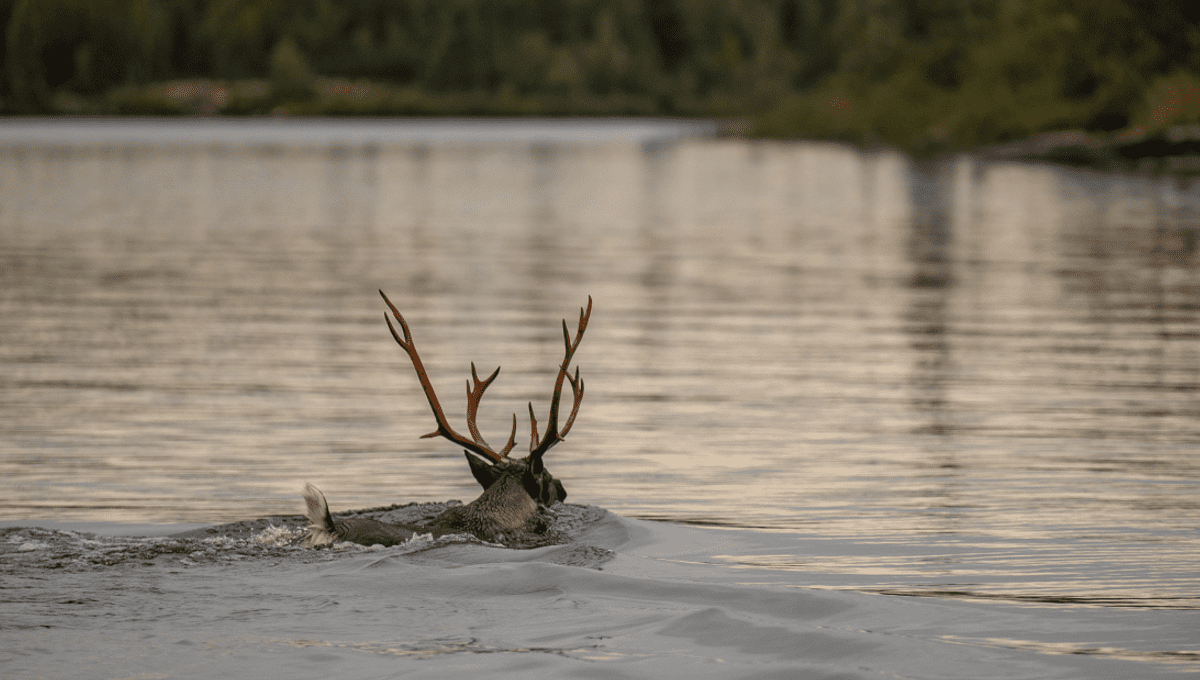
There are a few hitches in the logistics of a Christmas that sees a bearded man swoosh across the globe delivering gifts and coal to naughty and nice children – one of them is the unfortunate fact that reindeer can’t fly. They can, however, float.
Reindeer, scientifically known as Rangifer tarandus and more commonly as caribou, are amazing swimmers. They can clock speeds of up to 9.6 kilometers per hour (6 miles per hour) and do so to move between habitats separated by water.
Part of the reason they’re such proficient swimmers is to do with the fact that they float rather well. This is thanks to adaptations in their hair and hooves that make them naturally buoyant.
Reindeer have hairs that are hollow, likened by the National Park Service to bubble wrap as they trap pockets of air in a similar fashion. The adaptation helps them to keep warm in freezing temperatures as it acts as an excellent thermal insulator.
It’s also lightweight, which means they can have densely packed fur without getting too weighed down. The other perk of all that air-filled hair? It makes for a portable buoyancy aid.
Combined with wide hooves, reindeer can propel their buoyant bodies through the water with ease, and look rather majestic paddling along with their impressive antlers protruding out of the water. So, while flying is off the cards for these animals, floating is right up their alley.
Reindeer actually boast quite a few fancy features as Arctic animals. They’re also the only animals known to seasonally change the color of their eyes as an adaptation that enables them to see better in twilight, the eerie light that sits between day and night.
While viral posts show their eyes going all White Walker, the actual change is more subtle in reality, seeing it go from golden to blue in a way that’s only just visible in living animals. The eyes of dead reindeer that passed in the summer and winter demonstrate the change much more clearly.
Caribou also have a penchant for forming what’s been coined “reindeer cyclones”. It occurs when startled reindeer band together and keep moving in a constant swirling motion, a behavior that is thought to confuse predators and make it more difficult to pick out a single animal from the herd.
“It’s a defense strategy, designed to confuse any predator,” PBS said in a documentary about reindeer. “Whether wolf, bear, or Viking – achieving a clean kill in a swirling melee like this is difficult.”
Similar defensive formations have been observed in fish, as well as forming into a large ball or tornado-like schools, scaring off even large predators.
So Rudolf might not be landing on your roof anytime soon, but they’ve got a few tricks up their hoof.
Source Link: Reindeer Don't Fly, But They Do Float